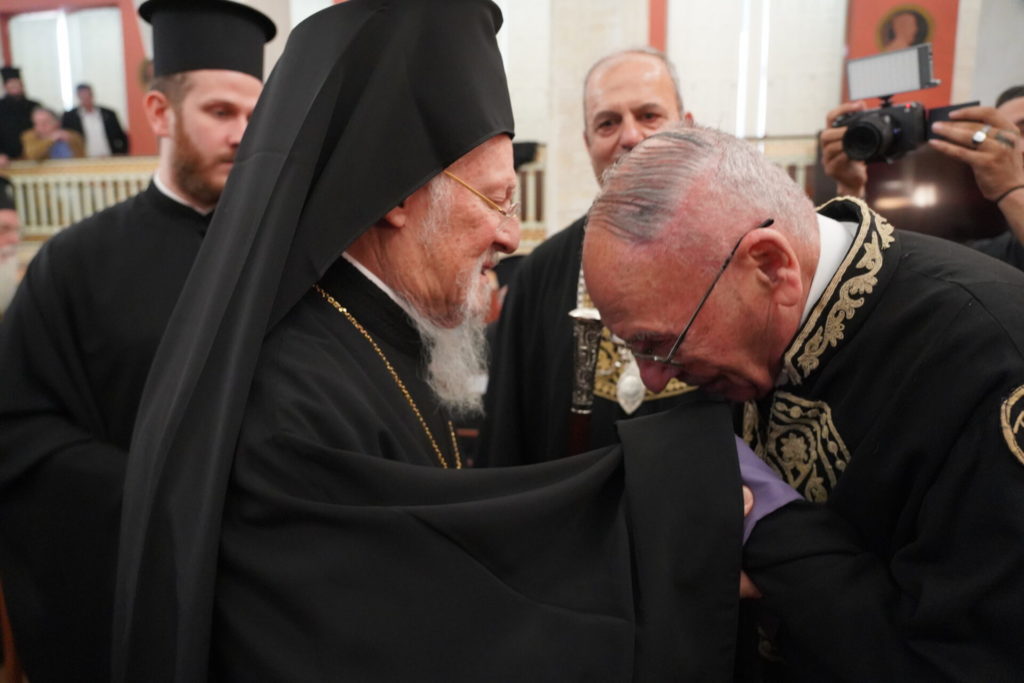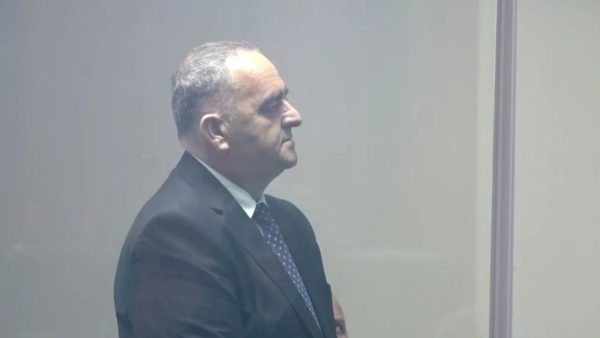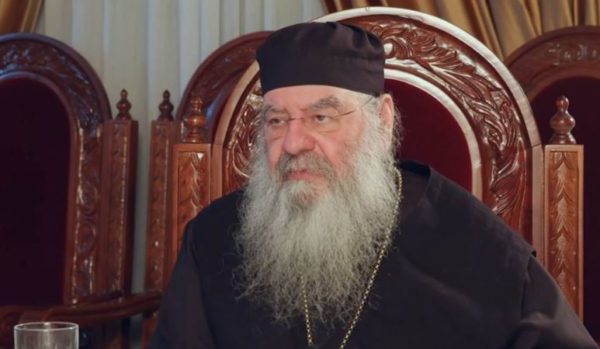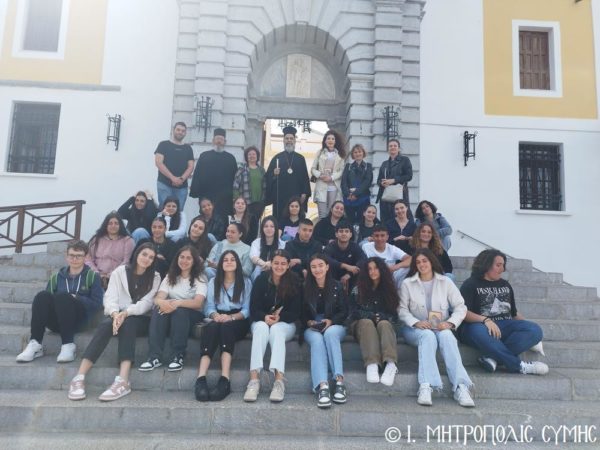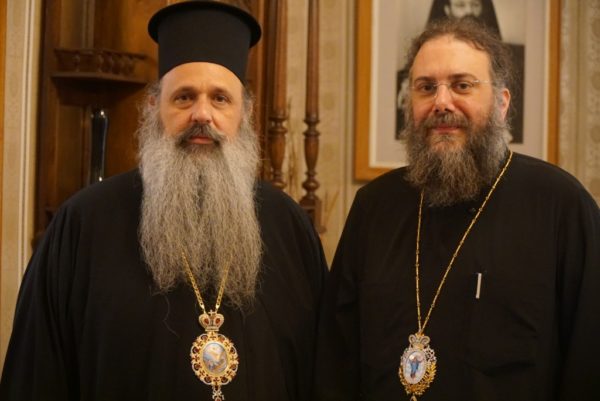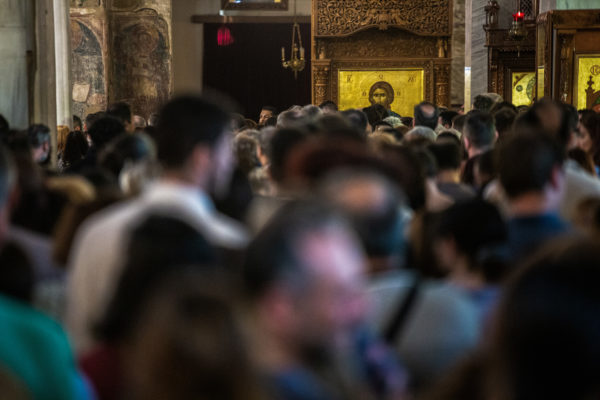Nea Moni Monastery, An Historical Treasure on the Greek Island of Chios
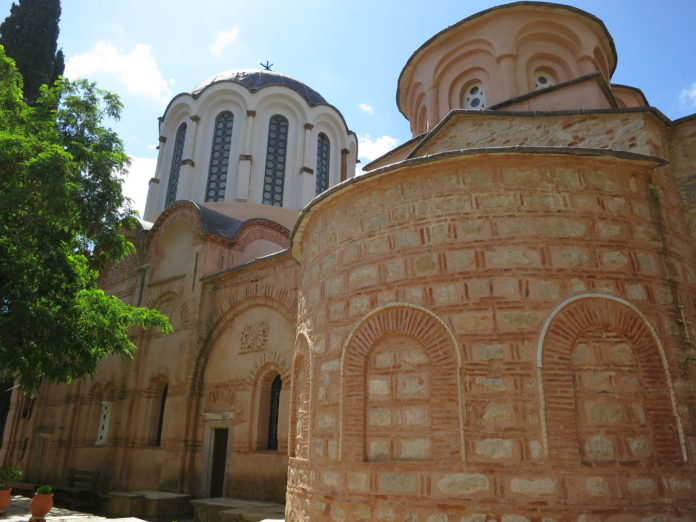
Located on the Greek island of Chios is another treasure from Greece’s long history, now listed on UNESCO’s World Heritage List. Nea Moni, or “New Monastery,” which was built in the 11th century, was constructed on the slopes of Mt. Provateio, approximately 15 kilometers from Chios town.
It houses some of the finest mosaics in all of the history of what is known as the “Macedonian Renaissance.”
The monastery was built in the mid-11th century by Byzantine emperor Constantine IX Monomachos and his wife, Empress Zoe.
Legend has it that Constantine, who at the time was exiled on the nearby island of Lesvos, was visited by three monks who had miraculously found an icon of the Virgin Mary hanging from a myrtle branch.
The monks then told Constantine that they had had a vision in which he had triumphed after his time of exile and become Emperor. Constantine agreed to construct a large church if this vision indeed became reality, and in 1042, after that exact event had taken place, he began construction of the edifice, dedicated to the Virgin Mary herself.
Just seven years later, in 1049, the main nave, or katholikon, of the church was opened to worship and the entire structure was completed in 1055, after the death of the Emperor. The main church is of an octagonal shape, the so-called “insular” type, found in Chios and Cyprus. All three sections date to the 11th century.
As was also the case with Western European monasteries, Nea Moni was endowed with “privileges,” legal ways in which it could collect taxes and land grants, making it quite wealthy during Byzantine times.
In a chrysobull dated July of 1049, Constantine Monomachos granted the monastery the right to collect a head tax on all the Jews who lived on Chios. He also made it autonomous, set apart from higher ecclesiastical or secular authorities, giving it great power.
Again, just as in the West, the monastery thrived throughout the centuries as it collected other privileges and amassed wealth through successive land grants and tax exemptions.
At the height of its power, around the year 1300, it owned approximately one-third of all the land on Chios and was home to 800 monks.
The monastery complex covers an area of approximately 17,000 square meters (182,986 square feet) and consists of the katholikon, two smaller churches which are dedicated to the Holy Cross and to St. Panteleimon, the dining hall, or “trapeza”, the monks’ cells, the reception hall, or “triklinon,” and an underground water cistern.
After the area came under the rule of the Genoese, Nea Moni’s wealth declined, but its fortunes surprisingly recovered during the Ottoman era, since it enjoyed more autonomy again, being legally subject only to the Patriarch of Constantinople.
In an evocative story, the late 16th century traveler Samuel Purchas related that Nea Moni had 200 monks, and that “alone in all Greece they had the right to use bells.” One century later, both the Patriarch of Jerusalem, Chrysanthos Notaras, as well as the French priest Fourmont, who visited the monastery in the 1720s, commented on the large numbers of monks, the quantity of relics preserved, and the beauty of the church and its decoration.
The monastery was the site of a great atrocity during the Greek War of Independence, after the destruction of Chios by the Ottomans in April 1822. Two thousand Chios residents had sought refuge in the monastery, but the Ottomans stormed it, slaughtering scores of them with out pity.
The Ottoman forces then set fire to the templon and other wooden furnishings of the church, including the roof, leaving the rest of the surviving refugees to burn alive in the monastery. Understandably, Nea Moni was never the same, and the number of its monks declined precipitously after the great destruction of most of the structures.
In 1881, an earthquake further damaged the main church, leading to the collapse of its dome, and several other buildings, including the bell tower constructed in 1612, were completely destroyed.
Nea Moni was converted to a convent in 1952 because there were so few monks left on the island. Now, it is home to only three nuns.
The complex is now surrounded by a new wall, after the original Byzantine wall was destroyed in 1822, and in the northeastern corner stands a defensive tower, which in earlier times was used as a library.
In addition, outside the walls of the monastery, near the monks’ cemetery, there is a small chapel dedicated to St Luke.
The main church suffered such catastrophic damage in the war in1822 and the 1881 earthquake, that its current, rebuilt, form is different from the original. The bell tower was constructed in 1900, replacing the original tower built in 1512.
Along with the katholikon, the only remaining 11th century buildings at Nea Moni are the partially ruined tower, the chapel of St Luke, the cistern and parts of the trapeza. The cells, most of which are in a ruined state, date back to the Venetian and Genovese periods.
A small museum, opened in 1992, is housed in a renovated cell. The artifacts displayed there date mostly from the latter 19th century.
H αναδημοσίευση του παραπάνω άρθρου ή μέρους του επιτρέπεται μόνο αν αναφέρεται ως πηγή το ORTHODOXIANEWSAGENCY.GR με ενεργό σύνδεσμο στην εν λόγω καταχώρηση.
Ακολούθησε το ORTHODOXIANEWSAGENCY.gr στο Google News και μάθε πρώτος όλες τις ειδήσεις.









